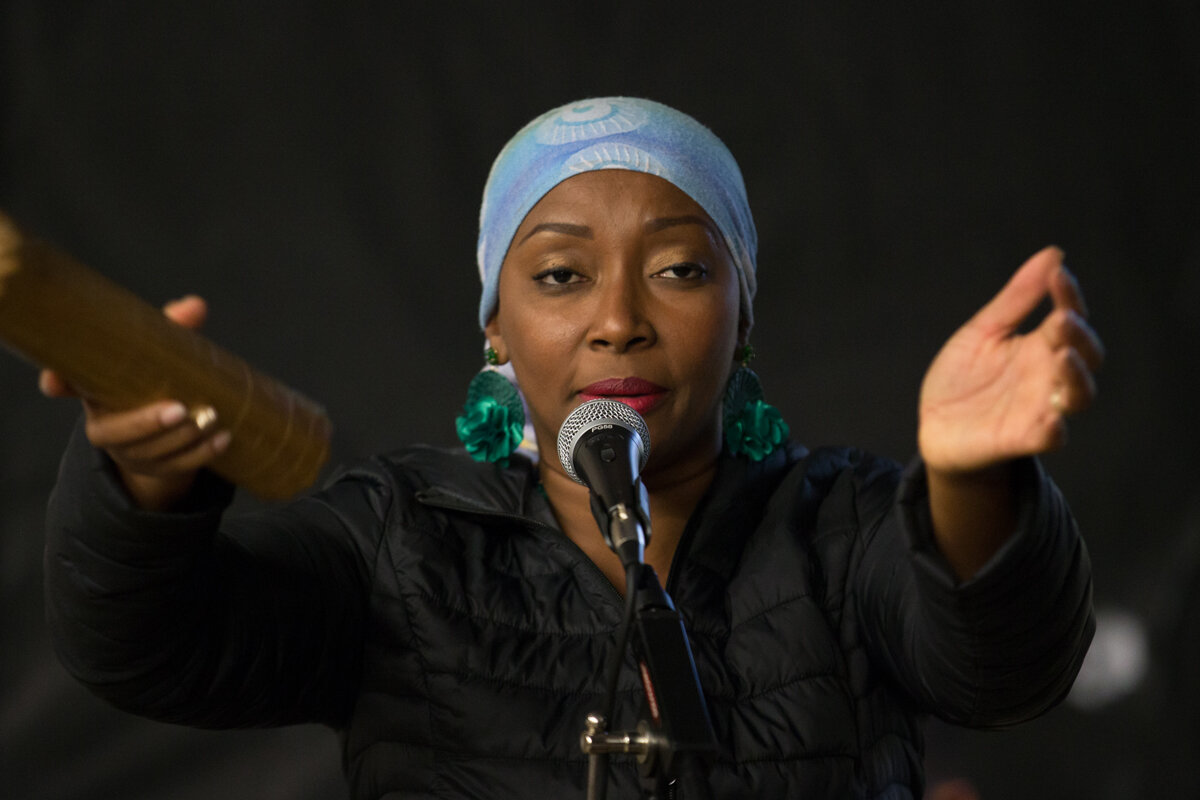“Exodus” Going upriver with Benjamin Vanegas
“I am a soul of the 1800’s”. “Exodus” the new album from Benjamin Vanegas begins with those words. When his great grandfather, 17 year old Juan Manuel Castillo Realpe and three friends decided to leave their village, Barbacoas, setting out on a raft down the Patia river, his mother knew she would never see him again. Starting with that moment, Benjamin takes listeners upriver into the tropical rainforests in the west of Colombia.
and the Super Yamba band kicked off
“Exodus” available on Bandcamp https://benjaminvanegas.bandcamp.com/
Feature 2
In Juan Manuel’s lifetime Barbacoas, Timbiqui, Guapi outposts of the African diaspora, resisting the oppression of colonial era. Cultural knowledge was passed orally between the generations ever since it arrived “intangible, in the brain of an African”.
“Exodus” is a return to the stories he heard growing up. The album contains 7 songs that he began writing in 2016, they are as contemplative and poetic as danceable. The bunde 4/4, and bambuco 6/8 rhythms are the backbone of the songs. Lyrically, they trace the recollections of his mother and grandmother, and using only the marimba chonta, bombo and cununo drums and guása (shaker) as instrumentation. On previous recordings, Benjamin fused global rhythms with his traditions. He is the leader of Grupo Taribo (Marimba Materia Prima 2012), and more recently toured the US, with Rio Mira, and worked with electronic music producer Thornato.
https://wonderwheelrecordings.bandcamp.com/album/mama-clo
Water guides the daily activities and shapes the culture in these towns in the narrow strip of land between the Pacific Ocean and the mountains, stretching from the Colombia-Panama border to Esmeraldas Province in Ecuador. Juan Manuel traveled south along the coast until he reached Ecuador, where Benjamin was born and still lives. 90% of the population in the region are descendants of the Trans Atlantic slave trade, arriving to serve the Spanish needs for labor in the search for gold. The villages found along the banks are isolated from the rest of Colombia, only accessible by boat and subject to tidal flow in the lower reaches, thus able to maintain the musical traditions brought across the water.
Nidia Gongora
In this collection, the lyrics are brimming with imagery. His ancestors and their experiences live through his words. The mythological element to oral history and tradition are well served by Benjamins poetic approach, wrapping the listener in an enchanting mystical journey. Sparse Instrumentation, limited to those associated with Afro Pacific music, Marimba Chonta, Cununero, Bombo. Marimbas (Esteban Copete), Bombos (Sergio Ramírez) Cununos (Carlos Loboa) Guazá (Fernando Hurtado) musicians from the Rio Mira tour joined by Jud wellington perform on this album .
Benjamin Vanegas
“Éxodo” is a haunting lament over the bunde rhythm, also featuring Nidia Gongora on vocals. Juan Manuel Castillo Realpe was his great grandfather which who at 17 with three friends escaped his village on a raft in the post slavery era of 1870’s. “Thanks to the powerful memory of my mother and the power of a well-told story.” Benjamin says “Without a doubt, my brain will be able to reproduce until the last minute of life, as in a movie, Brígida Realpe crying and running desperately along the shore, watching her son leave.” The context of the song, Benjamin explains is this: “Thirty years before, the abolition of slavery in Colombia, modified the mode of production and the temperament of the Masters, who became feudal lords, while the foremen unleashed their fury on the young blacks in the farms and mines. Then, one of the many great exoduses from the Colombian Pacific Coast to Esmeraldas Ecuador exploded.
Estaban Copete, marimba chonta, Carlos Loboa cununo and Tito Ponguillo, bombo on stage with Benjamin Vanegas, vocals and guása during the Rio Mira tour. All perform on “Exodus”
The lyrics in “Marimba” describe how the instrument crossed the ocean “intangible, in the brain of an African”. As the story is told it is the migration of the instrument itself. The Marimba Chonta, a descendant of the West African balafon, is unique to the Pacific region. The 24 keys are made from Chontaduro (peach palm) tree while the resonators are constructed from Guadua bamboo.
“Agua” starts with a marimba duet, Tito Ponguillo on (Marimba Tiple) and Jud Wellington on (Marimba Bordón) the flow of the notes evocative of water, the chorus repeats the phrase running water and juxtapose lyrics describing the tears flowing down the cheeks of Juan Manuel’s mother as he left down the Patia river. Benjamin also sang this song with Rio Mira whom he toured the US with in 2019.
“Cununero” is a spoken word poem praising the ancestors of the drum, accompanied by drums and a cununero solo from Carlos Loboa. Onda Migrante is a song sung with Nidia and her childrens choir, Canalon de Timbiqui, that tells the story of how the African ancestors came in little boats, told from the perspective of a bird flying above watching over and using its charms to protect them during the voyage.
“Mama Clo” describes the woman’s tradition translated through food, lyrics that bring back childhood memories. Grandmother telling the children to blow on the wood so the fire doesn’t go out. Traditionally non verbal vocal techniques are an element of the music, incorporated into the structure of the song.
On the above version of the song, Swedish electronic musician Thornato brings forward the pulsating warmth of the chorus vocals, meant to be the sound of the children blowing on the fire, mimicking them electronically.
photo: Taller-Laboratorio Músico Artesanal “Marimba Materia Prima”
With the onset of the pandemic interrupting his touring schedule he has expanded the workshop in Esmareldas where he builds marimba chontas.
Text by Mondolocal with Will Villa





